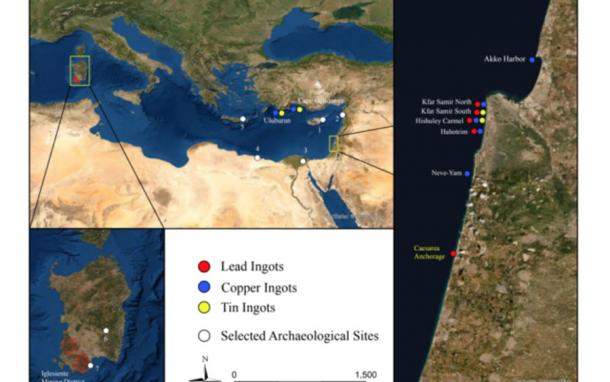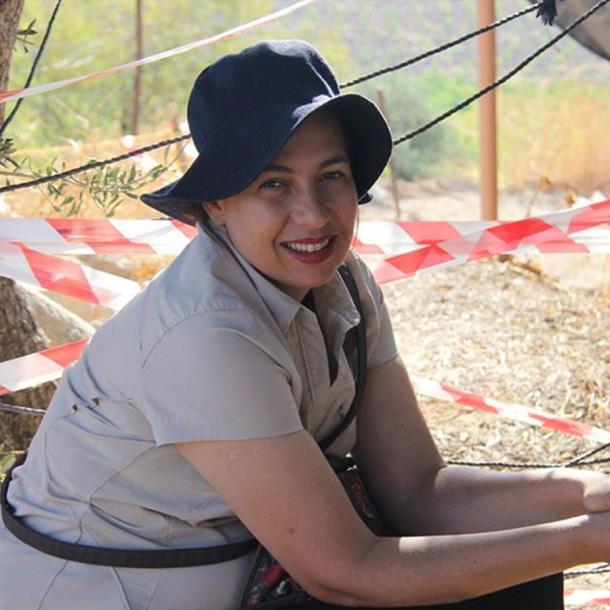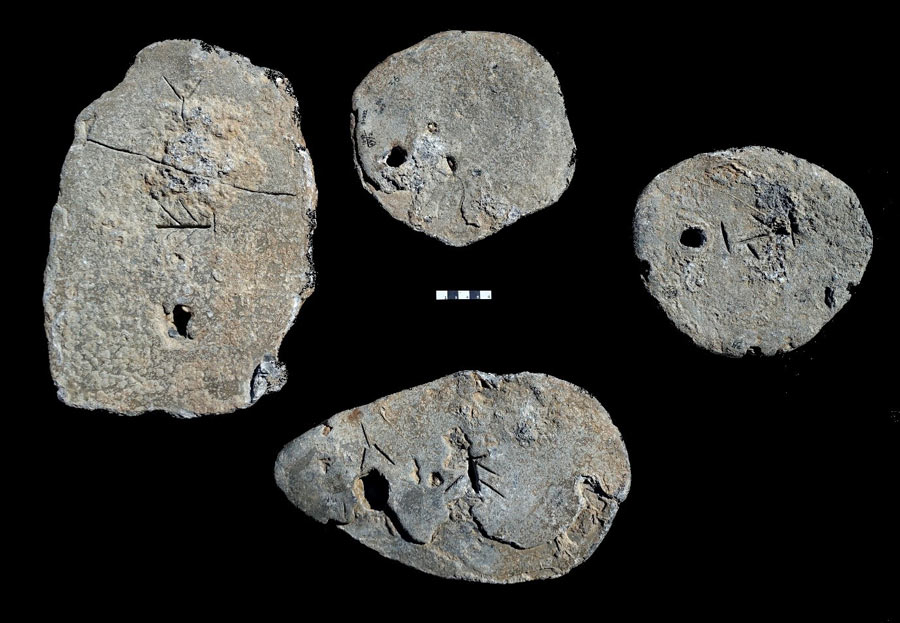Four Ancient Lead Ingots Rewrite Cyprus’ Role in Bronze Age Trade
It’s all changed in the ancient history of Cyprus, thanks to the discovery by archaeologists that the copper-rich island was a significant trader during the fall of empires in 1200 BC. The keys to these new revelations were four lead ingots discovered within the cargo of a shipwreck off the coast of Caesarea, an ancient port on the Mediterranean coast of present-day Israel, just south of Haifa.
A new paper, published in the Journal of Archaeological Science: Reports, says the ingots were originally recovered by archaeological divers in 1987 and 1989 among 22 Bronze Age shipwrecks. At that time, the mysterious etchings on the faces of the ingots were indecipherable. Now, however, they are read as Cypro-Minoan , a language used by ancient Cypriots during the 13th and 12th century BC. Having completed a study of the ingots origins a team of Israeli scientists say “a shift” is required in the understanding of Cyprus’s geopolitical role in late Bronze Age trading.

Map of the Mediterranean showing the findspots of copper, tin and lead ingots. (D.M. Finn / Journal of Archaeological Science: Reports)
The Case of the Four Mysterious Lead Ingots
The chapter title reads like the name of a Sherlock Holmes investigation, and this is because the new research project and study followed a similar format. A report in Times of Israel explains that the co-author of the new study, Prof. Naama Yahalom-Mack of the Hebrew University’s Institute of Archaeology, said the research project was “a bit of a detective story.”
- Into the Drink! Roman Shipwreck Stocked with Amphorae Found Near Cyprus
- Multicultural Ancient Treasure Hoard Discovered In Cyprus Tombs
The first step was to decipher the curious markings on the lead ingots. Once this was achieved, it was easy to discover the origin of the metal. Isotopic analysis determined the lead was mined in Sardinia, which Dr. Yahalom-Mack says was an unexpected result. Sardinia is located beyond the western Mediterranean, which according to the researcher is way beyond the Cypriots’ regular route of trade: Egypt, the Levant, Anatolia and the Aegean.

Prof. Naama Yahalom-Mack, of the Hebrew University’s Institute of Archaeology, said the research project was “a bit of a detective story.” (Hebrew University)
Switching from Passive to Active
Cyprus has always been considered a “passive player” in the ancient world of international trade and warfare. Archaeologists had always interpreted the island’s ancient cultures as being only copper producers, while others traded the metal and enjoyed the profits, selling value-added products to foreign markets. However, the new research describes Cyprus as “a small but agile nation with both formal and informal trade ties.”
The lead ingots show that Cyprus was not only producing copper, but was exchanging and trading it for other metals, even though Cyprus and Sardinia are 2,500 kilometres (1,550 miles) distant from one another. Furthermore, this new information suggests Cyprus might have “helped fill the power vacuum that occurred with the collapse of entrenched empires around 1200 BC.”
This period saw widespread social degradation including the cultural collapse of the Mycenaean kingdoms, the Kassites in Babylonia, the Hittite Empire in Anatolia and the Levant and the New Kingdom of Egypt. But Cyprus, it seems, thrived at this time.

3D scans of the Late Bronze Age lead ingots discovered off the coast of Caesarea, an ancient port on the Mediterranean coast of present-day Israel, just south of Haifa. (Avshalom Karasik / Israel Antiquities Authority)
Who Were the Ancient Sardinian Copper Traders, Exactly?
Dr. Yahalom-Mack says that the new research demonstrates that along with the formal trading recorded in ancient texts, there was also informal trade. This means fleets of smaller merchant ships managed by entrepreneurs had forged “extensive diplomatic connections, exchanging gifts, trading raw materials, particularly metals.” To have achieved this, the sea captains must have tagged onto the formal trading systems, “hitching a ride on it,” the researcher added.
- A Dozen Mediterranean Shipwrecks Reveal Global Trade
- Scientists Track Silver Trade From Trojan War to Roman Republic
While it’s known that ancient Cypriots produced hundreds of tons of copper, and that they supplied it to cultures all over the Mediterranean, the big question remains unanswered: who exactly was doing all the copper trading? Dr. Yahalom-Mack explained that these new discoveries have allowed Cyprus to be represented in archaeology as a much more “active player.” From now on historians and archaeologists will be able to focus on understanding “the mechanisms” of the copper trade, including identifying the traders. In conclusion, the scientist explained that the team has evidence to suggest the mystery copper elites were the Canaanites. Watch this space.
Top image: The four lead ingots discovered in a shipwreck off the coast of Israel. Source: Ehud Galili / University of Haifa’s Institute for Maritime Studies
By Ashley Cowie



















